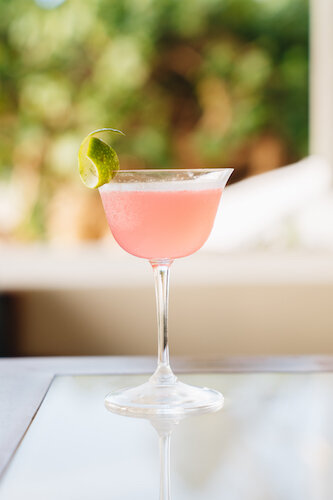How Kō Hana is Raising the Bar with Single Cane Agricole Rums
Editor’s note: Just recently Kō Hana Distillers announced that it has leased an additional 220 acres of farmland in Hale‘iwa on O‘ahu’s North Shore, further expanding its heirloom Hawaiian sugarcane farming operation. The harvests from this new field will enable their rum production to reach 75,000 cases per year – an over 300 percent increase.
Ko Hana Cane Field
Centuries ago, ancient Polynesian way-finders crisscrossed the Pacific Ocean in search of islands to colonize and settle on. Along with supplies and domestic animals, they carried seedlings of native plants onboard their canoes to propagate in their new homes. In about the 13th century, the voyagers hit Hawaii and planted sugarcane, among the other “canoe crops” like taro and yams. Fast forward 800 years or so, and examples of these now “heirloom” varieties of cane could be found only in botanic garden exhibits, vacant lots, or “Auntie’s backyards.”
Ko Hana Cane Bundles
Influenced by Dr. Noa Lincoln, an ethnobotanical researcher, and native Hawaiian, Jason Brand, and Robert Dawson, founders of Oahu’s Kō Hana Distillers, set out to find cuttings of these native cane species. Lincoln helped the founders understand the importance of preserving the original strains of kō (sugarcane), not just for their botanical value, but also for their traditional medicinal and spiritual uses. What better use of sugarcane than to make rum?
Rum in the Hawaiian Agricole style
A couple of Hawaiian distilleries are making rum in the Hawaiian Agricole style from fermented, freshly pressed sugarcane juice. Most rums are distilled from either molasses, cane syrup, or both. A byproduct of sugar refineries that is produced in various forms all over the Caribbean, Central America, and South America, rum has more recently been distilled in the United States. In Martinique, a French colony, cane growers began to produce rum directly from fermented sugar cane juice when sugar prices collapsed in the mid-1800s and there were no industrial byproducts to be had. The resulting unaged Rhum Agricole tastes grassy, earthy, funky, and herbaceous—a complete departure from the caramel-ly, brown sugar notes found in traditional white rums.
While Kuleana, a rum producer from the northernmost tip of the Big Island, combines multiple cane juices in their ferments, Kō Hana, an Oahu distillery located 20 miles NW of Honolulu, juices each variety in the field, then ferments, distills and bottles them individually to create single cane expressions. “It felt disingenuous to lump them all together…we treat these plants the way a winemaker will treat grapes,” says Kyle Reutner, Kō Hana’s general manager. “Ko Hana” means “work of the cane,” and this sugarcane works very hard indeed.
KOHANA bottles
The payoff is huge—they’ve created 11 versions so far, with about 20 more varieties to go. The juice, which oxidizes almost instantly, making it essential to ferment right away, varies in flavor from cane to cane. Earthy like the deep purple Pāpa'a. Savory like the red and purple Mahai'ula. Tropical, tart, and floral like the light green Lahi. Saline with black olive notes like the purple and green striped Manulele.
The distillers add a proprietary champagne-style yeast, and the 500 gallon batch of juice is left to ferment for 4-6 days until the proper low sugar level (brix) is attained. The ferment is then transferred to their modern hybrid still, then is left to rest in stainless steel for 3 months to mellow. The white spirit, called Kea, is bottled at 80 proof in distinctive square bottles labeled with the name of the cane whose spirit is within. I was lucky enough to try four different varietals, and each one brought its own flavor notes (herbal, earthy, fruity, briny) to the daiquiris that I shook.
Hau Tree bar
Less is more
Jen Ackrill, who runs the beverage program at the newly opened Kaimana Beach Hotel in Waikiki, says that “The less-is-more approach to utilizing Kō Hana rum is the key, let the spirit shine, say, in a Daiquiri or a ‘Ti Punch. Currently, I am using it for the Kunia Castaway on the Hau Tree Bar menu but in a modifier fashion, using the unique grassiness to funk up the Stiggins Extra Fancy in a very simple but delicious rum sour.”
Kō Hana also has a unique barrel-aging program—their Koa is aged in oak and then finished in endemic koa wood barrels, giving it an acacia red hue and complex, warm spice and butterscotch flavors. Ackrill agrees, “The real magic is in the aged Koa: dry and funky like a bourbon on vacation, making that spirit ripe for an old-fashioned variation.”
Castaway Cocktail
Kunia Castaway
Recipe courtesy of Jen Ackrill, Hau Tree Bar
1oz Stiggins Extra Fancy pineapple rum
.5 oz KoHana Kea
.75 oz lemon juice
.5 oz simple syrup
Shake well and fine strain into a chilly coupe and garnish with an expressed lime peel.
Koa Old Fashioned
Recipe courtesy of Jen Ackrill, Hau Tree Bar
2oz KoHana Koa
.25 oz simple syrup
1 dropper Bitterman’s tiki bitters
Stir over cubed ice till well chilled and pour over a large cube. Garnish with an expressed lemon and orange peel.





